Edited: August 2, 2022
MUTCD stands for “Manual on Uniform Traffic Control Devices,” and this manual has specific regulations for Stop Sign sizes and placement that must be followed. Stop Signs (MUTCD Code R1-1) are octagon-shaped, red regulatory signs that are used to indicate to drivers that coming to a slow roll is not sufficient, they are required to stop completely.
Stop Sign Sizes
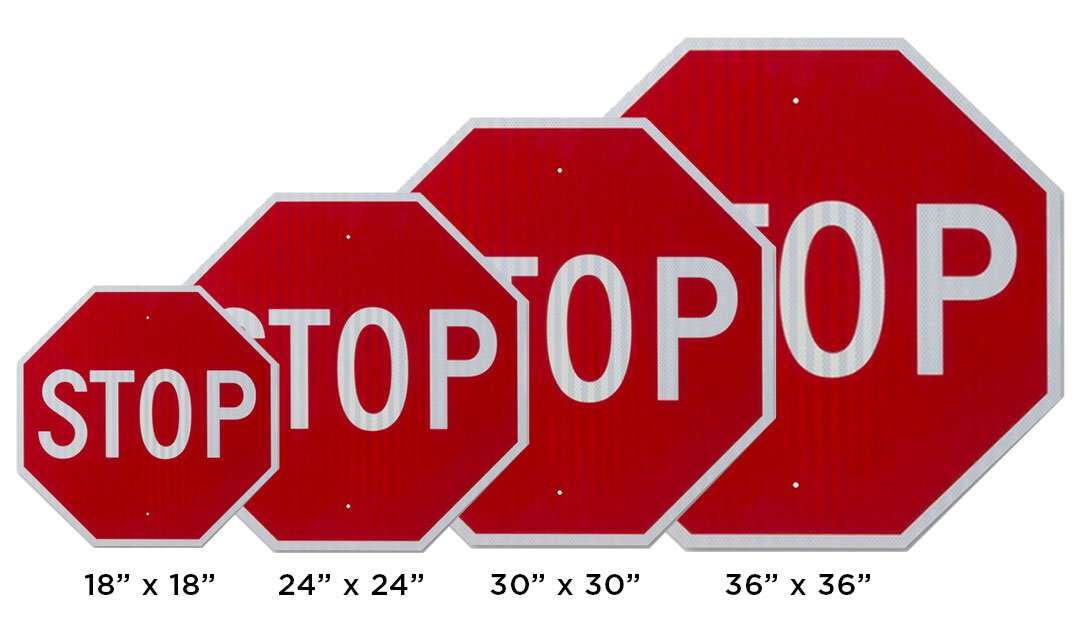
The octagon shape remains the same, but there are a few different sizes available. Most common is 30” x 30”. Here are the MUTCD guidelines.
Size 18” x 18” is too small – does not meet MUTCD specs – but can be used on bike paths or shared-use paths.
Size 24” x 24” is the minimum requirement, only good for parking lots.
Size 30” x 30” is the main specification for official street applications. If you’re installing a Stop Sign on a conventional road, this is the size you need to use.
Size 36” x 36” is large and in charge, best suited if you’re installing a sign at a hazardous intersection, off-ramps and multi-lane approaches.
Placement
Here are some guidelines for Stop Sign placement.
- STOP signs should not be used for speed control.
- STOP signs should be installed in a manner that minimizes the numbers of vehicles having to stop. At intersections where a full stop is not necessary at all times, consideration should be given to using less restrictive measures such as a YIELD sign.
- Once the decision has been made to install two-way stop control, the decision regarding the appropriate street to stop should be based on engineering judgment. In most cases, the street carrying the lowest volume of traffic should be stopped.
- A STOP sign should not be installed on the major street unless justified by a traffic engineering study.
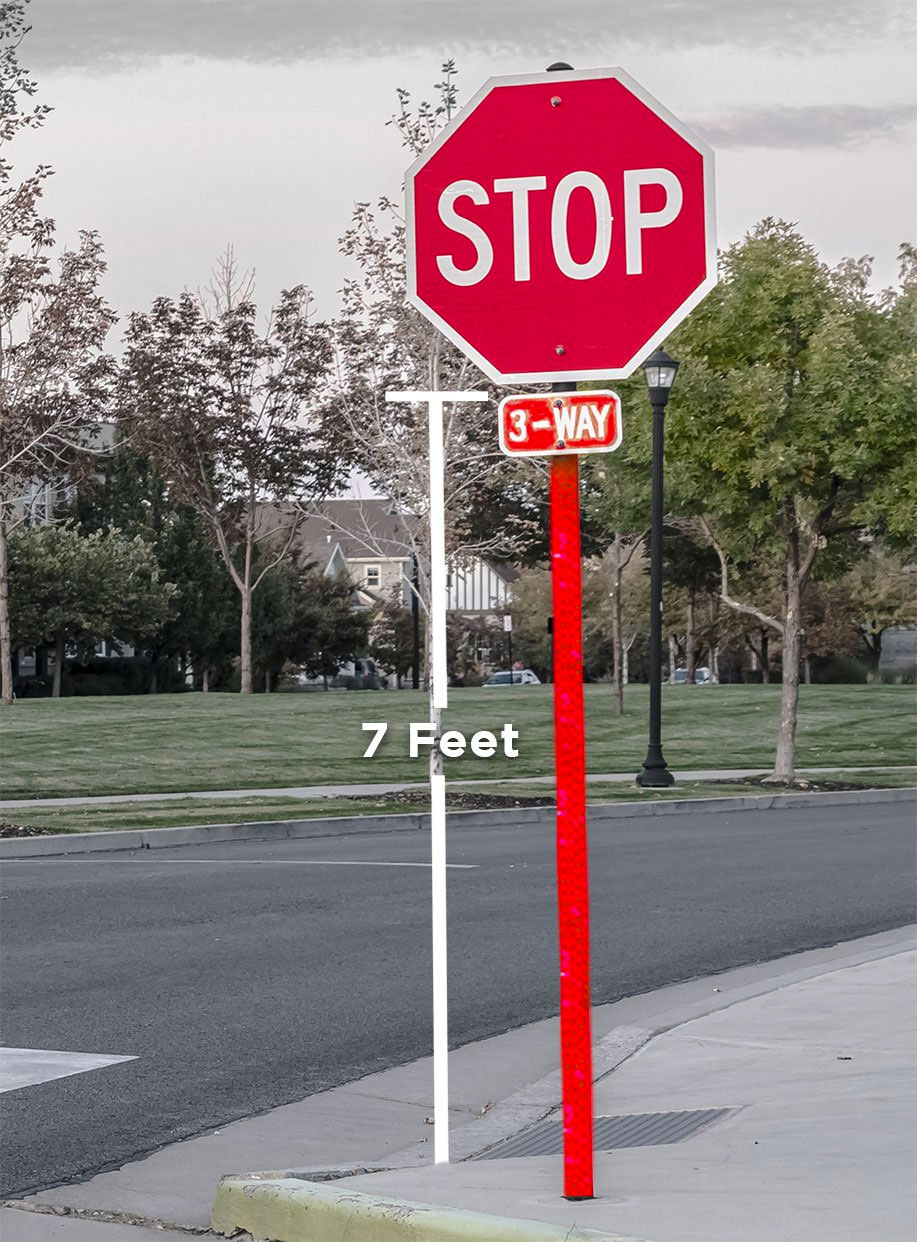
When placing a stop sign, make sure it is at least 2 feet from the curb. In rural districts, sign should be at least 6 feet from the edge of the pavement. Placement of the stop sign is to be at either the stop line or 4 feet in advance of a crosswalk. If there is neither a stop line nor a crosswalk the sign should be placed where traffic can stop and clearly see both directions before entering the intersection, and no greater than 50 feet from the intersection.
Height. On main roads, for businesses, commercial and residential areas, the sign should be installed at a minimum of 7-feet tall measured from the road. Side note: a stop sign at this height may also hinder the shorter graffiti artists, but street-toughs are resilient, so we do offer a protective overlamanent for your sign that helps with graffiti.
On a rural roadside, the minimum vertical height of your stop sign, measured from the bottom of the sign to the elevation of the pavement edge, is 5 feet.
Stop Sign Reflective Sheeting
Your sign reflective sheeting is important. Research shows that the use of higher-performing reflective sheeting results in brighter, more visible signs and helps reduce crashes. Click here to learn more about reflective sheeting.
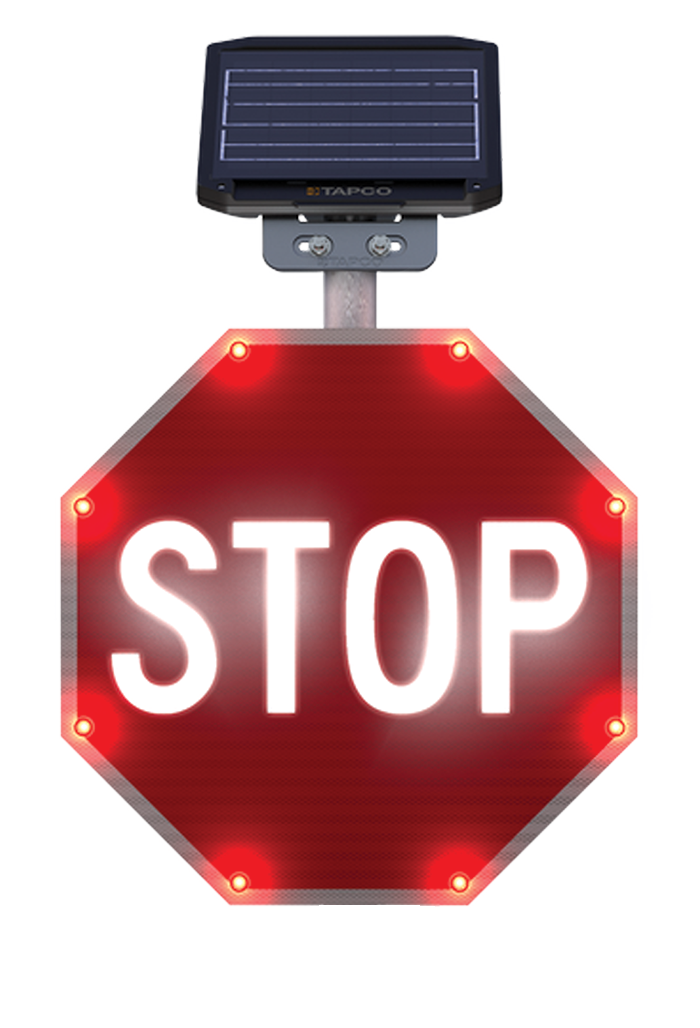
Want added visibility on your Stop Sign?
Try LegendViz.
TAPCO’s LegendViz™ Traffic Signs feature an LED-illuminated legends for improved visibility at night, enhanced sign legibility without retroreflectivity or headlights, and is designed for quick and easy one-person installation.
This application is great for low ambient light conditions, intersections with perpendicular or offset angles and problematic, or dangerous, locations. Click here to learn more.
Keep in mind, we’ve just gone over the guidelines. These are not recommendations because every street, every road, crosswalk and intersection are unique. If you think one of your roads could use a stop sign, your responsibility is to have an engineering study done first to identify any possible specific hazards or conditions.

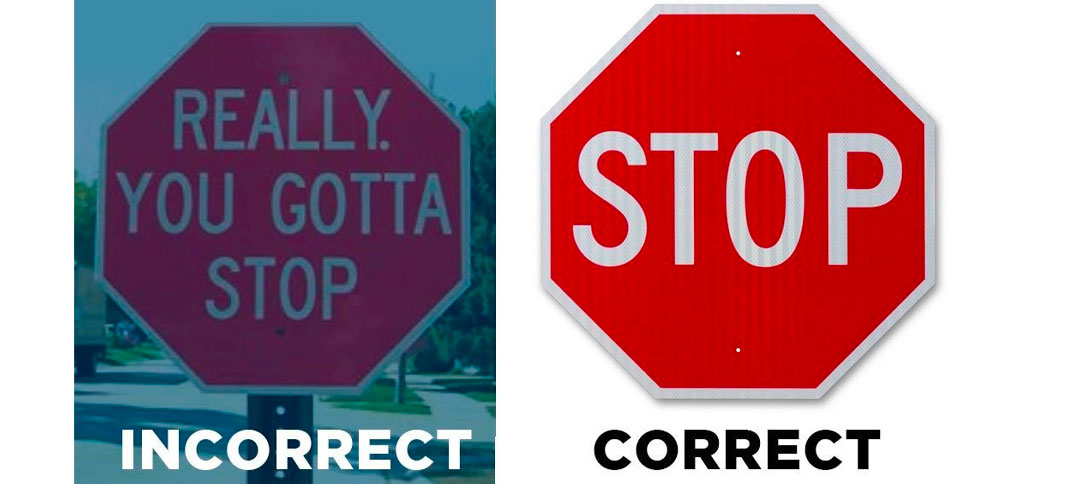
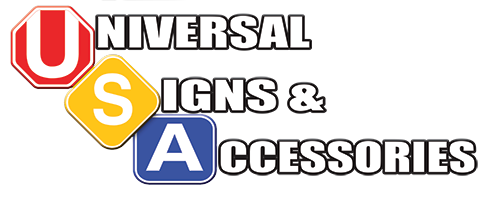


It’s 7 foot from the road not the curb
Josh, you are correct, and we’ve edited the content. Thank you for pointing out our mistake. If anyone is interested in reading this section in the MUTCD, click here.
Stop signs can be up to 50′ from the intersection due to utilities and yes before a crosswalk where a stop sign is present. Stop bars indicate where drivers are to stop in these cases. Stop bars can be after a stop sign or inline but never placed before it.
The MUTCD has no jurisdiction over parking lots. It can only make suggestions as per the FHWA. If not in the MUTCD the states can supplement with their own MUTCD that can be more strict but never less.
36″ stop signs are to be used when approaching a 45mph street from a lower speed not just major roadways.
How far apart should the 4 way sign be apart from stop sign?
1) can a stir sign be mounted on a building? 2) if allowed what is the max height?
Mounting a stop sign on a building may be fine. It also depends on the building(s) layout, how far the building is away from the traffic lane, if that building is on the correct side of the traffic lane to which a stop sign would apply, etc. Also consider if the building allows for the proper height. Your local government may be able to quickly give you a “yes” or a “no” answer, and I would definitely inquire with them.
Is there a minimum speed for vehicle travel on a road that approaches a stop sign. To be more clear…. Can a road where the posted speed is 50 or 60 or 75 mph have a stop sign? Or does the roads posted speed need to decrease to a speed which is safer to stop from before a sign is posted. Or do roads with higher speeds need to warn drivers of stop sign ahead before posting the sign. If so, what distance does the stop sign ahead warning sign need to be posted before the stop sign? Hope that makes sense… thanks
Excellent question. Roads with high posted speeds may be considered a “major street” and per the MUTCD Section 2B.05 STOP Sign Applications: “A STOP sign should not be installed on the major street unless justified by a traffic engineering study.”
A traffic engineering study may need to be performed and would be your first step. This will give insights into how a stop sign on this type of high-speed road would impact traffic and how to safely reduce speeds leading up to the stop sign. An answer to your question would also depend on the road itself and sight distance to the proposed stop sign.
Advanced Warning
Stop Ahead Warning Signs (such as W3-1 and W3-1a) are to be used. The MUTCD regulations on advanced placement distances for warning signs can be found here: https://mutcd.fhwa.dot.gov/htm/2003r1/part2/part2c.htm#section2C29
States have different regulations. Here in Florida, the FDOT published these regulations on Stop and Stop Ahead sign placements:
Can a stop sign be added to an existing street sign?
Beverly, yes, it can be. MUTCD 2.16 states signs should be installed on separate posts except where:
A. One sign supplements another;
B. Route or directional signs are grouped to clarify information to motorists;
C. Regulatory signs that do not conflict with each other are grouped, such as turn prohibition signs posted with one way signs or a parking regulation sign posted with a speed limit sign; or
D. Street name signs are posted with a stop or yield sign.
Can a stop sign be placed on tge left hand side of the street in a small city?
A Stop Sign can only be installed on the right side of the approach. If it’s a wide road, with two or more approaching lanes of traffic, the intersection may be improved with an additional Stop Sign on the left side.
Is it legal in the United States to install a stop sign on a through street for the safety of motorists entering the roadway from a private street in a private subdivision who already have a stop sign on their private street?
That will depend on a few variables, such as the speed of the through street. Having a stop sign on the private road may be sufficient, and per the MUTCD, the street carrying the lowest volume of traffic should be stopped. A traffic engineering study is needed to be performed on this specific location in order to evaluate the need for a stop sign on the through street. Especially if the through street is a “major” road. A traffic study would evaluate road speeds, amount of traffic on both streets, sight distance of conflicting traffic, etc.
In regard to the white limit line that you have to stop at before the stop sign itself, what are the requirements for its location? Does it need to be within a certain distance from the stop sign?
John, per the MUTCD, Stop Lines (which are 12 to 24 inches wide) should be “used to indicate the point behind which vehicles are required to stop.” Here’s a link to Chapter 3 of the MUTCD that covers Stop and Yield Lines: Click here. Go to Section 3B.16.
Can I-13a (Emergency Notification) sign be installed under STOP sign?
The I-13a Emergency Notification sign is for “highway-rail grade crossings to provide for emergency notification.” Do you have a stop sign at a railroad crossing? A Stop Sign with a Crossbuck Railroad sign?
The code states that a stop sign should be a minimum of 2 feet from the curb. Is there a maximum distance? I have seen signs placed on the far sides of sidewalks and those walks are separated from the curb by a planting area. This places that sign well out of the normal visual range.
Is there a minimum distance the stop sign has to be visible for? Thinking about tree trimming and such, from how far back up the road must the sign be visible from?
The MUTCD does not specify a minimum distance for visibility. However, it is stated that if there is a visibility issue with a Stop Sign when placed at the required location, a Stop Ahead warning sign can be used in advance of the intersection. Also, there may separate standards depending on the municipality or community your stop is in. If the tree branches, or obstruction, causes poor visibility, and can’t be trimmed back enough, definitely make sure your sign has the highest rated reflective sheeting, which will maximize visibility. You can look into the Stop Ahead sign. Another option be a sign with LED-lights that blink.
Can a DO NOT Enter sign be placed back to back on the same post if it does not extend past the stop sign border? Can a modified DO NOT ENTER that is the same shape as a STOP sign be used?
Walter, as long as the modified Do Not Enter sign (R5-1) is the same shape as a standard Do Not Enter sign, it can be used back-to-back with the Stop Sign.
Is this the correct method to install a stop sign? See image: https://www.johnmacknewtown.info/UserFiles/image/Yorkshire_StopSignMystery_Solved.jpg
If you are asking about the breakaway at the bottom, that appears correct. 7 feet from the road to the bottom of the sign is correct.
Is it legal to have a stop sign on a housing development road that has no intersection (possibly to help control speed)? Thank you.
Joe, the MUTCD states that “Stop signs should not be used for speed control.” Now, if there is a restricted view, or a high number of traffic incidents, an engineering study could help you judge if a stop sign is warranted.